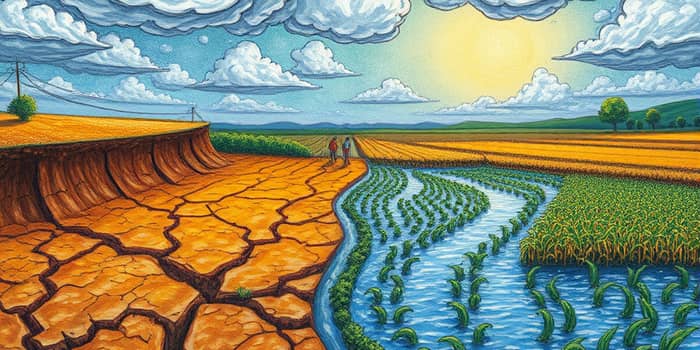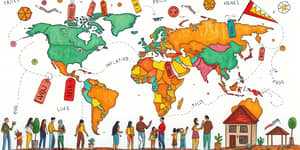
Natural disasters have become a defining threat to the stability of food systems around the world. As crises multiply, their toll on farmers, consumers, and supply chains grows ever more severe, compelling urgent action.
Between 2019 and mid-2022, the number of people facing acute food insecurity more than doubled—from 135 million to 345 million across 82 countries. This dramatic rise underscores how fragile our global food supplies have become.
Today, an estimated 821 million individuals are undernourished, 151 million children suffer from stunting, and 613 million women and girls endure iron deficiency. These figures highlight that food insecurity is not just a statistic; it is a daily reality for vulnerable communities.
63% of the impact from disasters falls on agriculture, a sector already strained by growing demand and limited resources. Each lost season pushes families deeper into poverty and heightens malnutrition risks.
Natural shocks come in many forms, each disrupting food production in unique ways:
Each event not only reduces immediate output but also erodes farmers’ ability to recover, compounding losses over time.
Disasters undermine the four pillars of food security:
When temperatures exceed 2°C above pre-industrial levels, these impacts become irreversible damage and malnutrition in many vulnerable regions.
About 80% of those most at risk from climate-driven hunger reside in sub-Saharan Africa, South Asia, Southeast Asia, and Small Island Developing States. If current trends persist, 43 million Africans could fall below the poverty line by 2030 due to climate-related crop declines.
In East and West Africa, the ongoing La Niña event has triggered back-to-back droughts and floods, causing recurrent livestock deaths and ruinous crop failures. A recent flood event displaced 5.6 million people and led to acute food shortages lasting months beyond the initial deluge.
In South Asia, intensifying heatwaves and unpredictable monsoons have disrupted rice planting cycles, while saltwater intrusion threatens paddy fields in coastal Bangladesh. In the Pacific Islands, sea-level rise and cyclones jeopardize taro and yam production—a cultural and nutritional mainstay.
Without swift intervention, rising temperatures will further:
increase the frequency and intensity of extreme events, pushing agricultural systems beyond adaptation limits. Heat stress in staple crops could cut yields by more than 20% in the Sahel and South Asia by 2050.
Biodiversity loss erodes ecosystem services such as pollination and natural pest control. Meanwhile, socioeconomic dynamics—rising populations, shifting diets, and precarious rural livelihoods—amplify vulnerability.
Addressing this crisis requires coordinated, multi-level strategies:
By integrating disaster risk reduction into agricultural planning and empowering communities, we can build systems that resist shocks and recover quickly.
The intersection of natural disasters and food security poses one of the most urgent challenges of our time. Yet with collective action and innovation, we can forge resilient food systems that endure climate extremes.
Governments, NGOs, farmers, and consumers must unite to implement adaptive practices, champion policy reforms, and strengthen social protections. In doing so, we ensure that every field, every family, and every nation can thrive despite the storms ahead.
References













